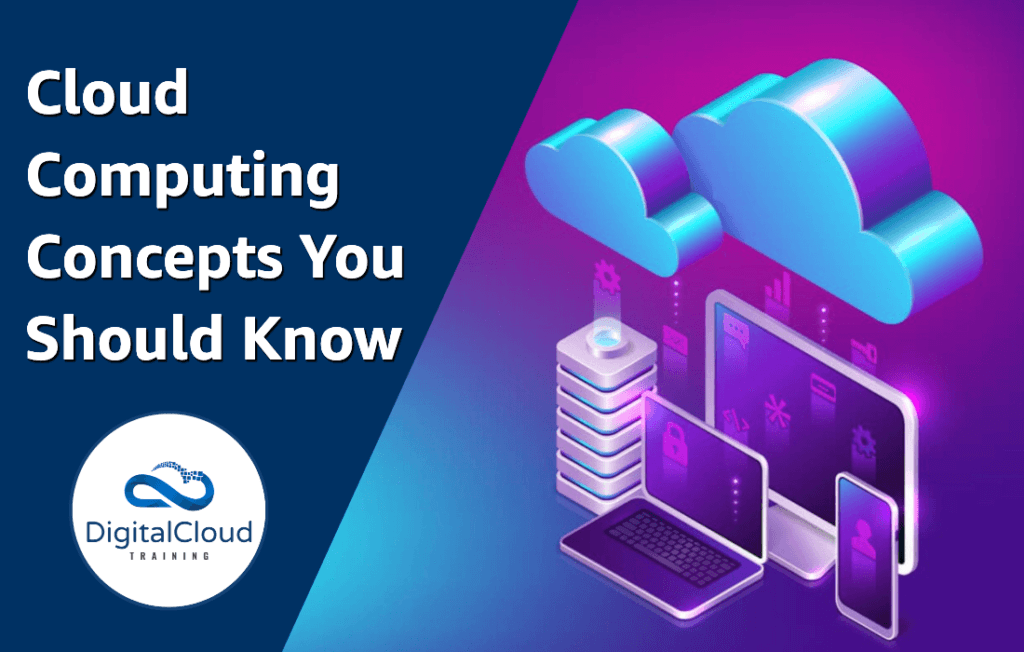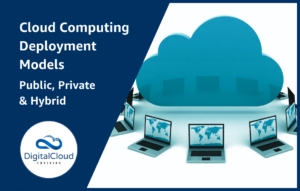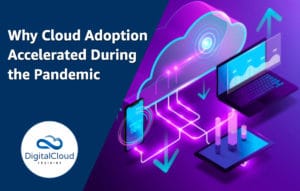Cloud Computing Concepts You Should Know
Please use the menu below to navigate the article sections:

Cloud computing concepts can be tough to get your head around. There are lots of acronyms and terms relating to cloud computing that are often misunderstood. But cloud computing is so pervasive in today’s business world that it’s essential to gain a basic understanding of the fundamental cloud computing concepts.
Today, various computing technologies are supported by the cloud in both the business and consumer space. Cloud computing is an umbrella term that covers a plethora of computing resources. You can think of cloud computing as utility services that provide convenient access to computing services at affordable rates.
After reading this article, you’ll be able to hold your own in conversations about cloud computing, the benefits it brings to businesses and the various cloud delivery models and cloud service models.
If you’re serious about moving into cloud computing professionally, taking cloud certification courses such as the AWS Certified Cloud Practitioner or AWS Certified Solutions Architect are good choices to help you build a strong skill set.
Cloud Computing
Let’s start our discussion of cloud computing concepts with the most important term, “Cloud computing” itself. Often referred to simply as ‘cloud,’ this is web-based computing that provides on-demand access to various compute resources. These resources include things like data centers, servers, application software and more. Most cloud computing service providers adopt a pay-as-you-go model. This allows companies to avoid the heavy infrastructure setup costs that were inevitable before the advent of the cloud.
XaaS (Anything-As-A-Service)
XaaS is another term you’ll often come across and it relates to what is known as cloud service models. This is a general category of services related to remote access and cloud computing. It includes a wide selection of technologies, tools and products that are offered to users as a service over the web.
Basically, any IT function can be changed into a service for business consumption. The service is not paid as a license or upfront purchase, but in a flexible pay-for-what-you-use consumption model.
XaaS comes with several benefits, including speeding up business processes and application development, improving the expense model (CAPEX vs OPEX), and streamlining operations to free up resources for innovation.
SaaS (Software-As-A-Service)
SaaS is a software distribution model where a third-party provider hosts a variety of applications and makes them available to customers on the internet.
In this model, the provider gives clients network-based access to one copy of an application created for SaaS distribution. The source code of the application is similar for all customers. When an update is rolled out, it is distributed to all customers.
Depending on the implementation, customers can store data in the cloud, locally, or both. Companies can use application programming interfaces (APIs) to integrate SaaS applications with other software to achieve optimal benefits.
SaaS has several benefits, including flexibility in payments thanks to its pay-as-you-go model, scalable usage, easy accessibility and persistence and automatic updates.
PaaS (Platform-As-A-Service)
PaaS is one of the major cloud computing models where a third-party provider delivers software and hardware tools over the web. More often than not, these tools are used for app development. The provider hosts these tools on their own infrastructure. Therefore, PaaS allows developers to work without investing in in-house hardware and software, which saves costs!
Something worth noting is that PaaS doesn’t replace your IT infrastructure for software development. Rather, it provides you with a simple and convenient way to get the job done in a timely fashion. It is provided through a cloud service and users access offerings through their web browsers. PaaS can be offered through hybrid, private, mobile or public clouds to deliver a host of services, including java development and application hosting.
Some examples of PaaS services include:
- AWS Elastic Beanstalk (managed web application)
- Microsoft Azure Web Apps (managed web application)
- Amazon Relational Database Service (managed database service)
- OpenShift (container platform)
Normally, you will pay for this service on a pay-as-you-go model, although some providers charge a monthly fee.
PaaS comes with several benefits, including eliminating the capital expenses companies used to incur for in-house hardware and software. It can also speed up application deployment.
IaaS (Infrastructure-As-A-Service)
IaaS delivers virtual computing infrastructure that is delivered and managed over the web. This model scales with demand and allows companies to only spend on what they use. It helps businesses avoid the complexity and expense of purchasing and managing in-house data center infrastructure.
There are lots of things businesses can do with IaaS, including:
- Test and deployment – teams can swiftly dismantle development and test (dev-test) environments and create new applications faster.
- Web apps – IaaS provides a host of resources and infrastructure needed for the development of web apps such as networking resources, application servers and storage.
- Big data analysis – Big data is one of the most popular terms you will come across. IaaS provides the infrastructure and processing power needed to mine big data.
- High-performance computing – Commonly referred to as HPC, helps solve complex problems involving millions of calculations or variables. This includes evaluating product designs, financial modeling, climate and weather predictions, and many more. IaaS provides the infrastructure to accomplish this.
- Web hosting – Running websites using IaaS is easier, more convenient and less costly than doing on traditional platforms.
IaaS increases reliability, supportability, and stability. Additionally, it enables users to scale up resources quickly and respond to shifting business conditions.
Serverless
Serverless is a cloud computing model that allows developers to build modern applications without thinking about servers. It allows them to shift most of their operational responsibilities to the provider. By using this model, you can concentrate on writing application code while the platform takes care of resource allocation, run times, security, scaling and other server solutions.
Serverless eliminates a range of infrastructure management tasks like patching, operating system maintenance, server provisioning and more. This goes a long way in saving costs in all aspects of application development.
Examples of serverless cloud computing services include AWS Lambda and Microsoft Azure Functions.
Public Cloud
Public cloud is a type of cloud deployment. It refers to computing services delivered by third-party providers over the public internet in a multi-tenant model.
Public cloud services are made available to anyone who wants to buy or use them. The services are often sold on-demand, therefore allowing clients to pay per storage, the bandwidth they use, or the usage of CPU cycles.
Private Cloud
Also known as corporate or internal cloud, private cloud refers to computing services provided over a private network. These services are consumed by internal company departments rather than the general public.
Private cloud provides businesses with a vast array of benefits, including scalability, elasticity and affordability. Perhaps one of the most important benefits of private cloud is that it provides high security and privacy levels through internal hosting and firewalls to ensure that hackers and snoopers do not access sensitive business data.
Hybrid Cloud
Hybrid cloud refers to an environment that incorporates private cloud and public cloud services. This kind of ecosystem allows workloads to move between public and private clouds, thus giving businesses more data deployment options and exceptional flexibility. Think of it as getting the best of both worlds.
Hopefully, this article has succeeded in demystifying some of the most common cloud computing concepts. If you’d like a more in-depth explanation and an opportunity to actually get started with AWS, enroll in our Introduction to Cloud Computing course today.
Ready to Take Your Tech Career to the Next Level?
- On-Demand Training: Learn at your own pace and on your own schedule.
- Challenge Labs: Apply what you’ve learned in a real-world setting without the risk of incurring surprise cloud bills.
- Cloud Mastery Bootcamp: Build job-ready skills with this live, immersive training that can get you certified faster than you thought possible.




